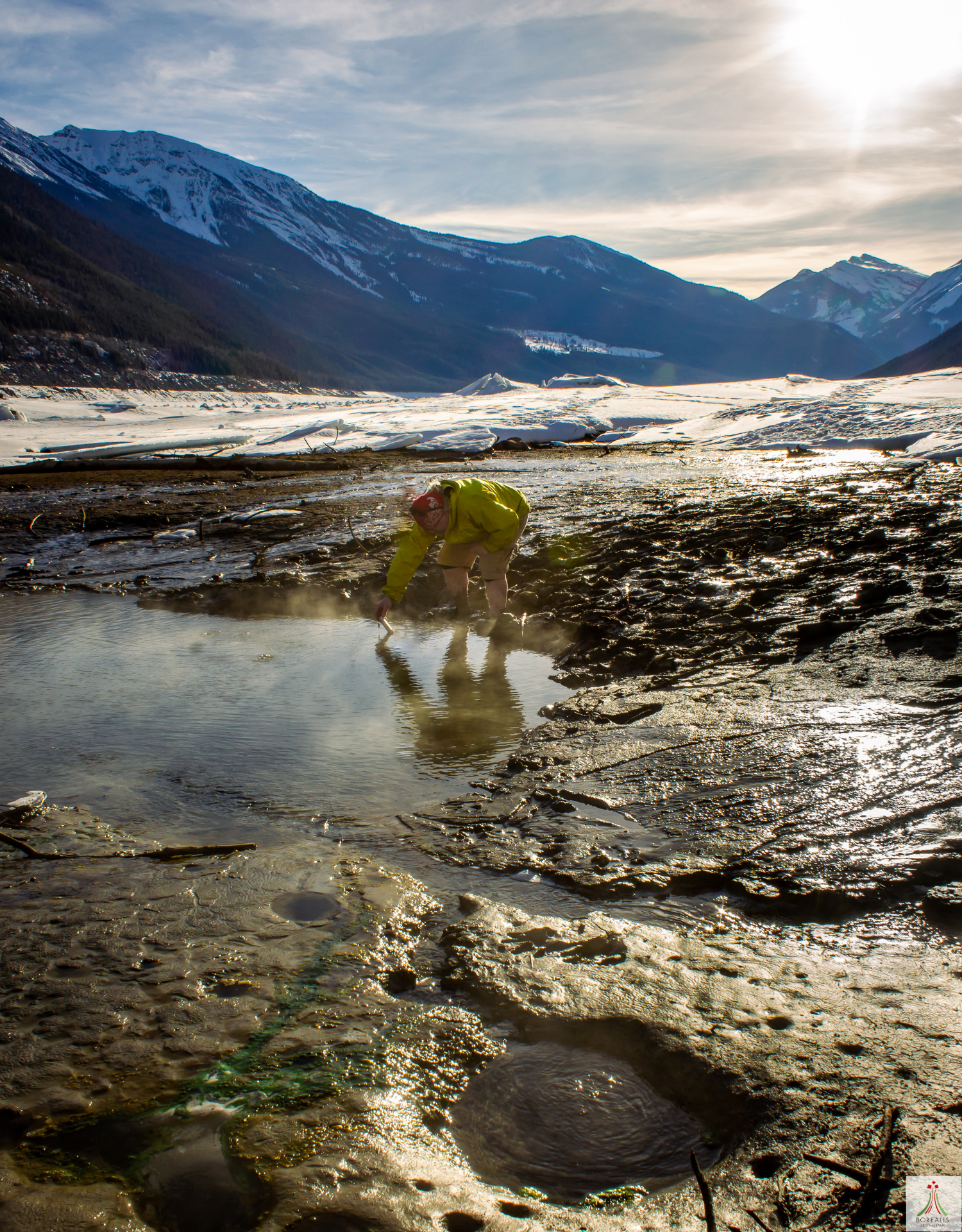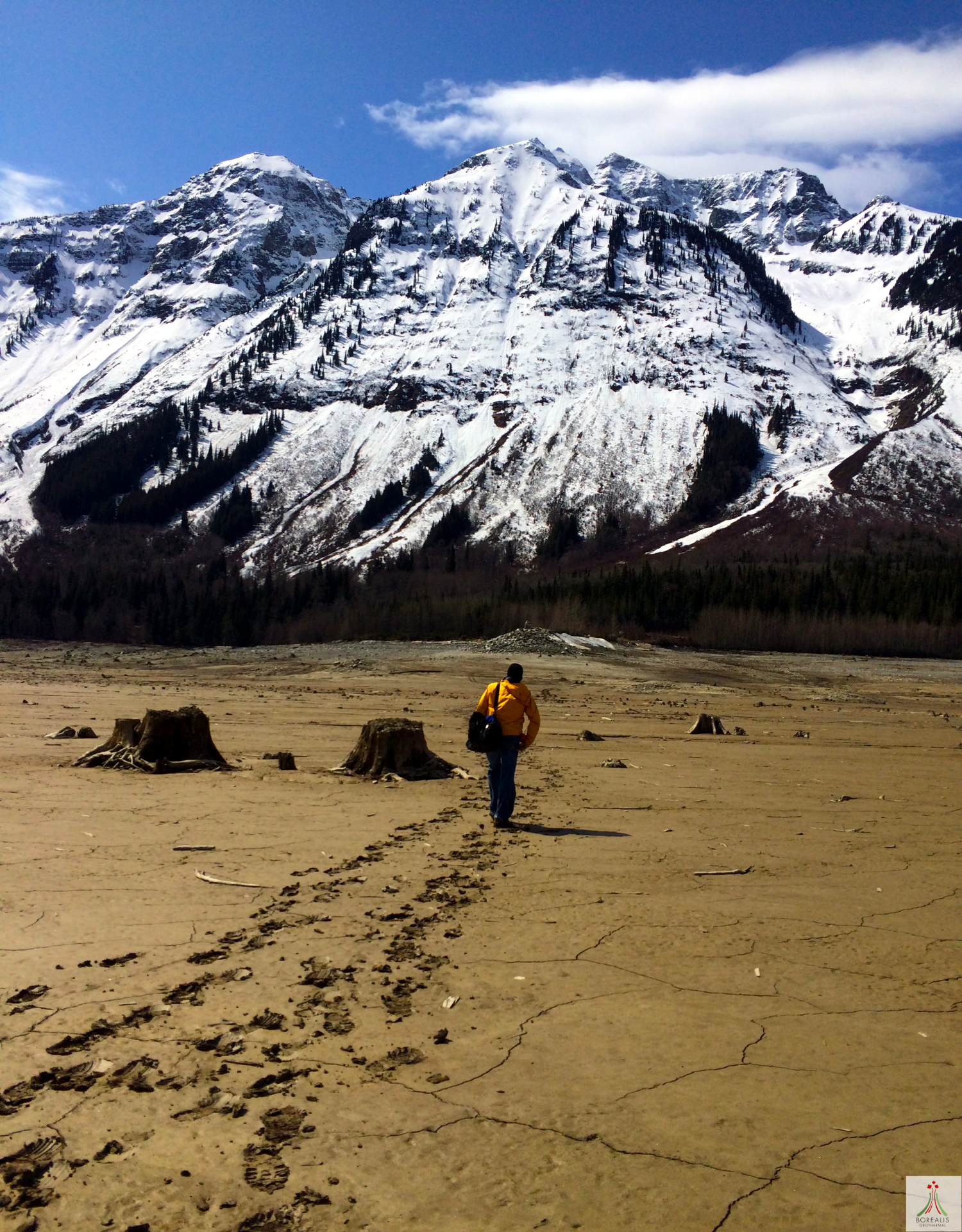Canada’s Geothermal Village – “Sustainaville” GeoPark
Lead Proponent: Borealis GeoPower Inc.
Location: Valemount, BC
EIP Contribution: $ 1.319 M
Project Total: $ 2.638 M
Strategic Area: Renewable Energy, Smart Grids, and Storage
Project Objectives:
Sustainaville GeoPark was meant to be a demonstration of a geothermal powered and heated industrial park sited in Valemount, British Columbia. It would bring a new renewable energy technology to Canada. The Energy Innovation Program contributed $1,319K towards a Front End Engineering Design (FEED) study and drilling program for the proposed geothermal industrial park.

A scenic view of a Borealis field team member conducting fieldwork in the Valemount area.
The FEED study encompassed the geological field work necessary to prove the reservoir, as well as the design and the BC Hydro interconnection studies required to site and install an Organic Rankine Cycle (ORC) turbine. Further work was done on choice of working fluid, spares and maintenance strategy, and electrical integration into the GeoPark. This study included well drilling to enable well testing, thereby confirming key design parameters.
Results:
Geological fieldwork was conducted to identify the most geothermally prospective areas for drilling. The surficial work included mapping of geologic features, fault modelling, and water geochemistry and biogeochemistry campaigns. This was further supplemented by a suite of surveys, including magneto-telluric, micro-seismic, gravity, aerial thermal mapping, and LiDAR.
The collected data was input and integrated into a 3D model of the play, which incorporated an internally generated perspective on drilling favourability, vis-à-vis accessing subsurface geothermal structures. This output a set of possible exploration options, which were the basis for obtaining relevant drilling permits.

A scenic view of a Borealis geologist walking along the dry Kinbasket Lake found in the Valemount area.
Nine geothermal drilling permits were obtained from the BC Oil & Gas Commission (BC OGC). Complementary land access, road use, license to cut and water withdrawal permits were also obtained prior to drilling. The first well was drilled in the Canoe Reach area, near the Purcell Thrust Fault, to the depth of 762m. Testing was conducted to determine thermal gradients, rock permeability, and formation pressure. Further, detailed analysis of the core was undertaken, providing a detailed stratigraphy for the test hole.
An interconnection study and an engineering feasibility study were conducted. While it was identified that combining heat with power loads was both technically possible and provided for better overall project economics, the local subsurface resource, initially identified at the preferred target did not prove sufficiently hot to drive a power unit. More positively, the subsurface evaluation has confirmed the economic viability of a local stand-alone direct heat play.
The initial plan was to achieve 4,000m of well drilling (5-6 holes). However, significant and unexpected expenses were incurred related to the first well’s pad location, pad size, on-site habitation, 24/7 onsite supervision, remote environment testing, H2S testing, and core storage that resulted in the first well consuming the entirety of what was budgeted for the drilling campaign.
Nonetheless, the test hole confirmed the existence of a geothermal resource, with temperature gradients more than double the local background. The test hole also confirmed some elements of the 3D model, allowing for more certainty with regards to future drilling. The micro-seismic work provided a basis for understanding the local stress regime and identifying which might be the most beneficial faults to exploit in the future, for geothermal energy.
Benefits to Canada
From a regulatory perspective, the project helped to define new permitting pathways with the BC Oil & Gas Commission (BC OGC) and contributed to the adoption of critical surface rights for geothermal rights holders. The project was the first recipient of a Geothermal Well Authorization from the BC OGC and the first to drill a geothermal exploration well, under their remit.
Next Steps
As geothermally driven electricity cannot be generated, the broader project is no longer viable. As such, Borealis needs to re-examine the project scale and scope, to determine if an alternate viable project can be developed.
On the ground, the test hole will be remediated, subject to final determination by both Borealis and the BC OGC of new standards for reclaiming geothermal test holes.
Project Partners:
University of Alberta
University of Calgary
NRC-IRAP
NSERC
MITACS Accelerate
Page details
- Date modified: